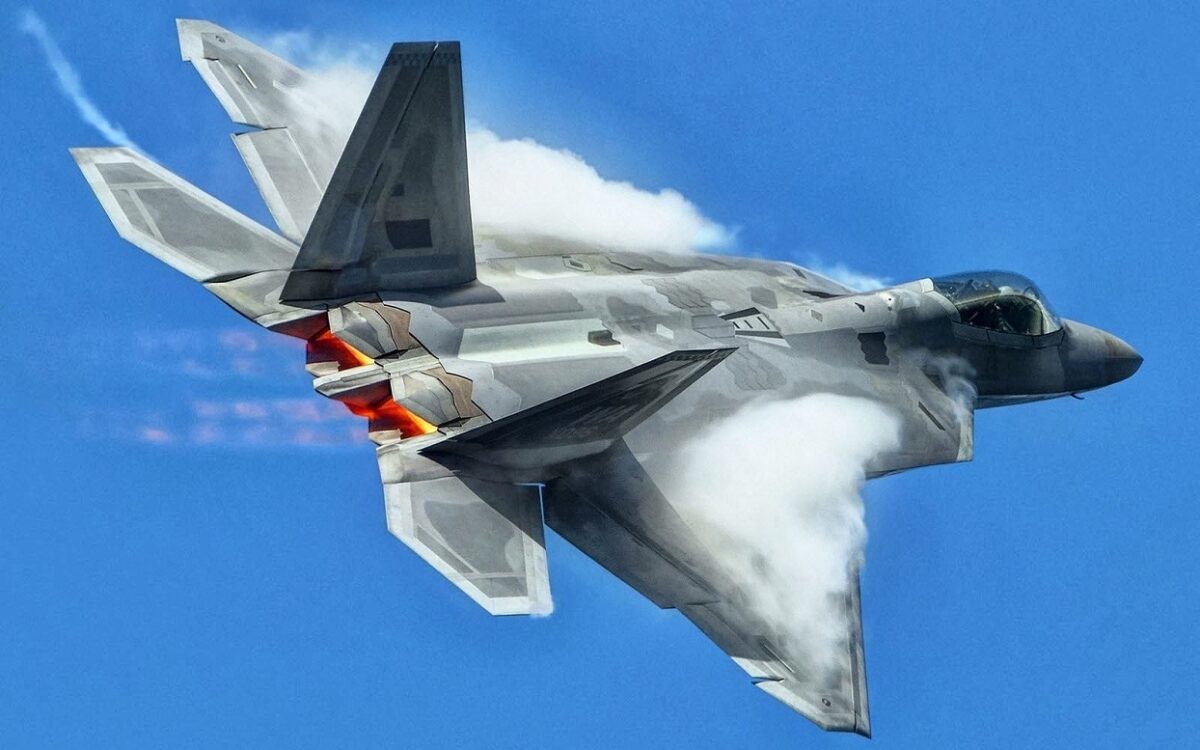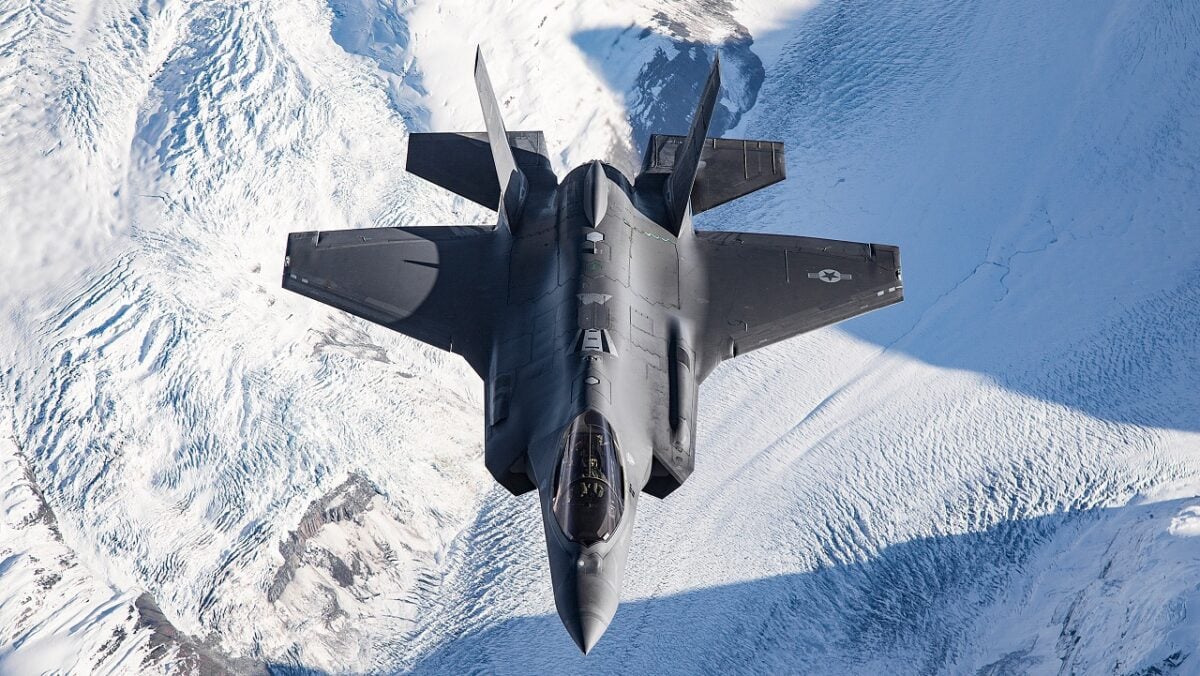Why is the U.S. Air Force sending billions of dollars worth of top-tier F-35 and F-22 stealth fighters to Alaska?: With the arrival of the 54th F-35 at Eielson Air Force Base in April, Alaska became home to the world’s largest concentration of fifth-generation fighter jets.
After a two-year buildup of the 354th Fighter Wing, there are now two squadrons of F-35s at Eielson in central Alaska. They join two squadrons of F-22s already stationed at Joint Base Elmendorf-Richardson farther south.
Alaska’s sprawling training ranges and its ease of access to Europe and Asia make it ideal for exercises, but working there is a constant test for pilots and crews, two officers with the 354th Wing said this month.
“We have a motto that ‘we’re ready to go at 50 below,'” and it does get that cold sometimes, Col. David Berkland, the Wing commander, said during an Air Force Association event on August 10.
“Today’s a beautiful 78 degree day, but if you come back in February, you’ll see that it’s a fairly ominous environment to maintain and support and operate airplanes,” Berkland added.
The Air Force has long had the US military’s largest presence in the Arctic — the first F-22 arrived at Elmendorf-Richardson in August 2007 — and it and other service branches have hastened to expand their footprints there as climate change makes the region more accessible.
Despite changes to the climate, the Arctic can still be inhospitable. Just getting to your plane requires bundling up, said Lt. Col. Ryan Worrell, commander of the 356th Fighter Squadron, which is part of the 354th Wing.
“You’re going to wear silk weight thermals. You’re going to wear fleece thermals,” Worrell said during the event. “Then you’re going to put your flight suit on and then your G suit, and then you’re going to put snow pants over your G suit, and then you’re going to put a snow jacket on, and then put your JSF jacket on, and then you’re going to put on Mukluks,” which are boots rated for temperatures down to -50 degrees.
“At that point, you’re so hot, you just want to get out of the building,” Worrell added. “We’ll walk to the jets in -30, -40 just because it’s easier to stay cool than it is to try and ride in the step-van. You’ll get in the jet and the goal is just not to sweat until you get out there and flying.”
Other airmen also deal with those conditions, Berkland said. “All of our mission-important people that are out there on the flightline operating, clearing the snow and ice around the clock, they have to operate in those environments. They have to maintain vehicles in that environment, in those conditions, so it is a challenge.”
Eielson is home to Arctic Survival School, called “Cool School,” which for years has trained airmen to survive long enough to be rescued.

Image: Creative Commons.
“Before our pilots can fly here in the winter months,” Berkland said, “they have to go through Arctic survival school that is conducted here at Eielson, which is fantastic training, very sobering — or chilling maybe would be the word — because you’re out there for a couple of nights and surviving down to -50.”
There have also been some F-35-specific adaptations for the region. In 2019, before the first F-35 arrived at Eielson, airmen tested a new Arctic survival kit for the jet.
“The F-35 seat kit doesn’t fit the sleeping bag that our F-16s can fit,” Berkland said, adding that the replacement was made thinner to fit and is “almost like a full-body poncho.”
“It does keep you warm enough to actually survive that kind of critical 12 hours that we assess we need” to conduct a rescue, Berkland said.
Pilots at Eielson have made other adaptations as well. The F-35 has touchscreens in place of many buttons and switches that other jets have in their cockpits, so pilots will fly “with gloves that are cut off on the thumb and the two fingers because you’re constantly up on the glass, and that touchscreen capability is where basically all of your functions reside,” Berkland said.
Alongside the weather-related challenges, airmen in Alaska “are kind of at the end of the logistics train for most of our parts and supplies,” Worrell said.
Parts may be ready “at time of need” but “not necessarily as a bench stock,” Worrell said, pointing to F-35 pilots’ custom helmets. Getting a new helmet “may take five or six days, versus just having a couple extras.”
“So there are a couple of initiatives we’re working, particularly flight equipment, to make sure that we have a bench stock available,” Worrell said.
Worrell and Berkland emphasized that being in Alaska adds a layer of difficulty to operations, requiring airmen to be conscientious and to think ahead when on the ground and in the air.
“Our team has a sense of discipline and a culture of discipline,” Berkland said, “because, frankly, there are no shortcuts other than discipline up here. If you don’t follow the tech order, if you don’t do all the little things right, if you delay maintenance actions, you are going to pay for it when it’s 50 below and dark out all day.”

F-35 AF-2 Ferry Flight from Edwards AFB, CA to Eielson AFB, AK. Oct. 11, 2017 Pilot Maj.Eskil “Taz” Amdal, Royal Norwegian Air Force.
‘Our night-one team’
Throughout the F-35 buildup, airmen at Eielson have taken advantage of Alaska’s unique training environment. The nearby Joint Pacific Alaska Range Complex is the size of Indiana, and its “threat replication” capabilities are being upgraded.
The most recent iteration of the Red Flag Alaska exercise took place around JPARC and wrapped up on August 12 after weeks of drills focused on air-to-air combat. “You can ask any of these Red Flag Alaska participants what they think of the JPARC, and they’ll tell you that it’s the best training airspace in the world,” Berkland said.
Eielson’s F-35s also use the JPARC for quarterly training with F-22s. “We call the bros down the street and say, ‘Hey, let’s get the team together that’s going to be our night-one team,'” Worrell said, referring to jets that would operate on the first night of a conflict.
Those jets can train together in a single sortie, which Worrell called “a big advantage of being here.”
The 354th Wing also exercises across the Pacific, training for agile combat employment and on related skill sets at “austere locations” around the region, Berkland said.
Training across the Pacific expanse tests the F-35’s ability to be a command-and-control node, marshaling and distributing information among other aircraft. Agile combat employment drills are also a test of logistical capabilities, Worrell said.
“Our priority now is to basically shift ourselves into full operational capability to conduct agile combat deployment operations” at austere locations in the Pacific, Berkland said. “That means that we need to be able to run hub-and-spoke operations with our full complement of fifth-gen combat airpower, so that’s really our focus.”
Worrell and Berkland emphasized the advantages the fifth-generation F-35 has over fourth-generation jets like the F-16, pointing to its ability to fuse sensor data — which Berkland said “enables a degree of situational awareness” that fourth-generation jets don’t have — and its stealth, which allows it to penetrate “the anti-access/area-denial capability” that adversaries have developed.
Those adversaries continue to improve their weaponry, Berkland said. “One of the biggest challenges that I see looking toward the future is continuing to rapidly evolve the F-35 capabilities to stay in front of what competitors are doing.”

